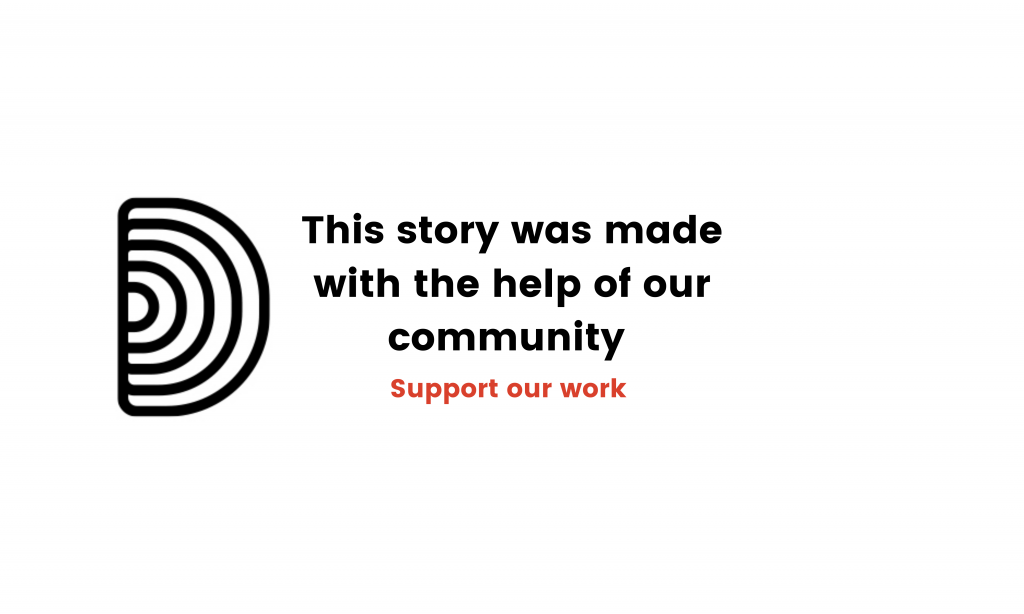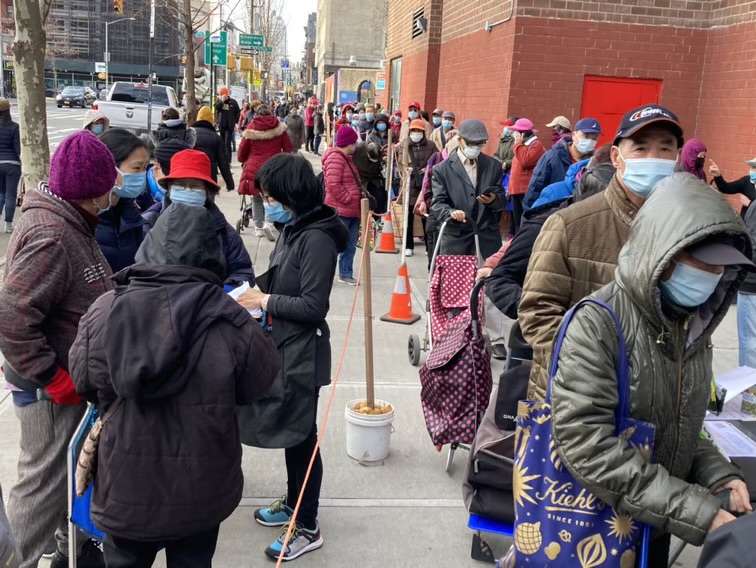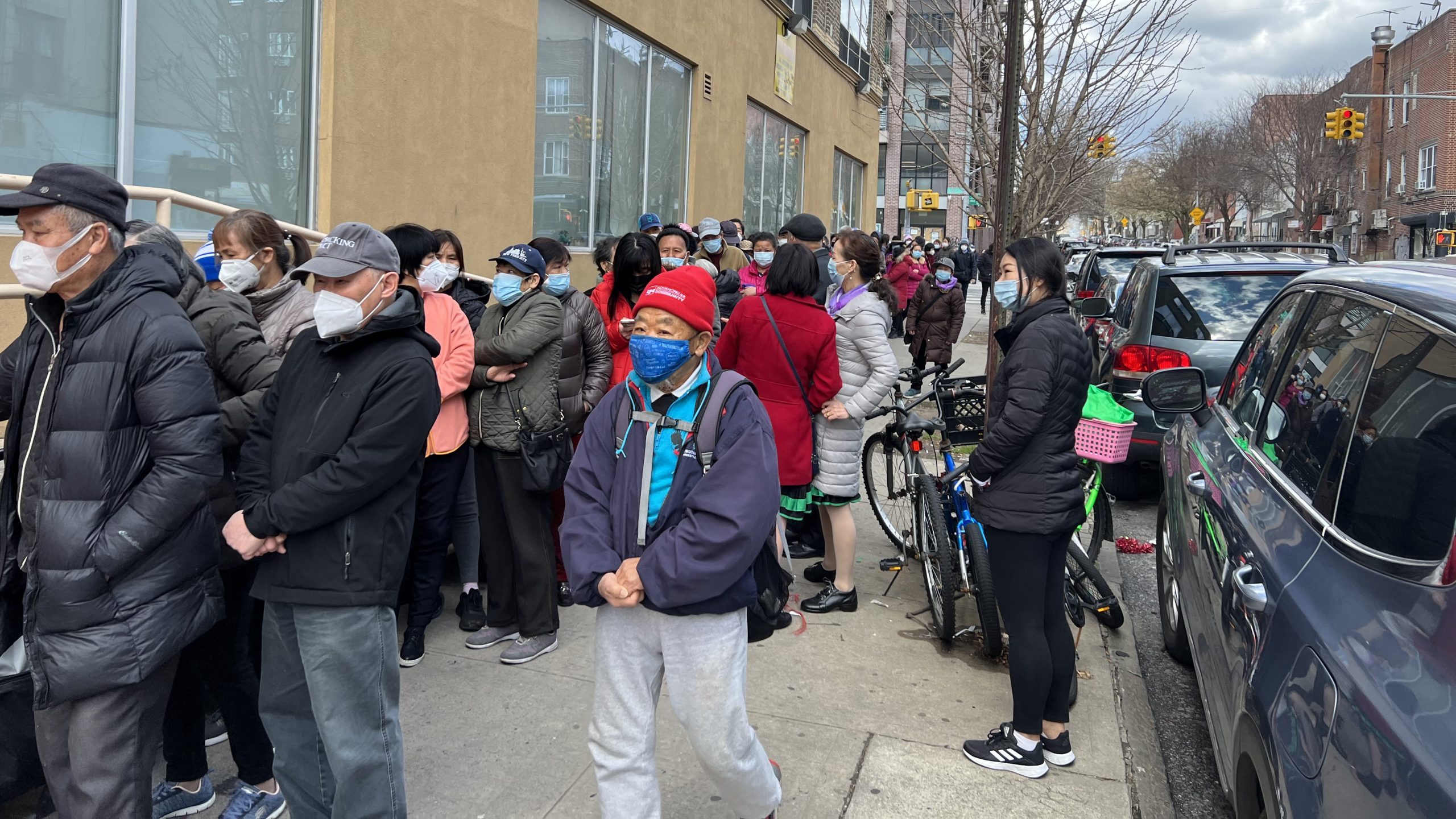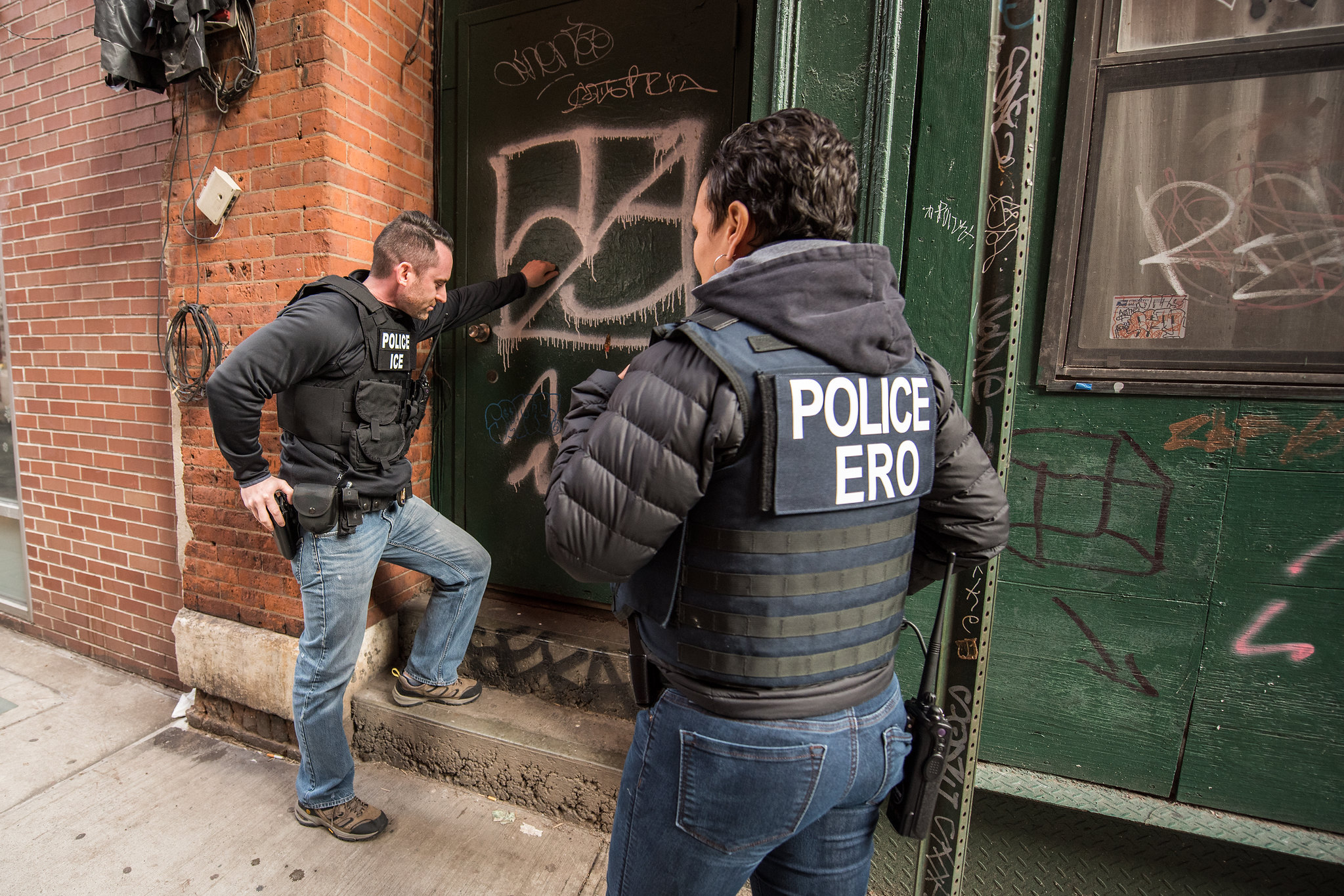
Guadalupe, 40, had relied on the fruit, dairy and breakfast cereal that she used to pick up from the Cristiana Luz del Mundo church near her home in Brooklyn every week. During the pandemic, she lost her employment as a home cleaner and frequented the food pantry to ensure her two children, 2 and 17-years-old, would have something to eat.
The church stopped its food distribution operations in the fall of 2021 and, since then, Guadalupe has had difficulty finding places near her home to get food. “I feel bad. Not for myself, because I have lived my life already but because of my kids,” she told Documented.
Like Guadalupe, elderly and low-income immigrants have used pantries throughout the pandemic to put food on their tables. However, a combination of lack of funding, shortage of volunteers, and increase in food prices, have led to pantries ceasing operations across the City. The closures have made it difficult for residents to access food and the demand has put a strain on nearby pantries that continue to operate.
Since arriving in the United States 19 years ago from Mexico, Guadalupe says she has always been able to provide for herself and for her family. It was not until her employer of more than six years let her go in the spring of 2020 that she was forced to cut costs of utilities to save up for necessities.
“I owe rent. I try not to use too much hot water, and even wash my clothes at home with cold water, so that we can save money for food,” Guadalupe said. The church she used to go to was always packed, but it would not take longer than 20 mins to get the food. Documented spoke with a representative of the Church that Guadalupe used to go to, and verified that their operations had stopped in Brooklyn but continued in Queens.
She tried going to Mixteca, a local non-profit organization helping the Mexican and Latin American community in Sunset Park, located 25 minutes from her home via bus. She says, however, that it’s hard to get food there because they usually distribute it on Thursdays in the afternoon, a day that she has to work cleaning homes. “So we keep looking for food places,” Guadalupe said, holding back tears.
Also Read: List of Food Help in New York State
The pantries that are closing operate on grants and donations from local organizations and neighbors. They are not listed among the 500 pantries and soup kitchens that receive funding from the City’s Emergency Food Assistance Program (EFAP) — a program which funds their operation costs.

Catie Fireman, an organizer at the Astoria Food Pantry, which has operated for two years without funding from EFAP, says that they have seen new faces in the past months who told them that the pantries they would use had closed down, or that some had less food available than before.
“We give out 200 to 250 bags of food on Mondays… We have seen the time that we run out of food be earlier in the last two months by like an hour. We used to open at 8 on Mondays and we used to be open until 11 or 12. And now it’s been more like 10 or 11,” Fireman told Documented.
Similarly, a Chinatown pantry operated by the local organization UA3 has also seen an increase in the number of neighbors that provide food to. Chi Loek, Executive Director of UA3, said the demand for food bags “has increased by 10% in the last two months,” growing from 2,000 to around 2,200 between January 2022 and March 2022.
Closures of Pantries That Were Active During the Pandemic
UA3, like the Astoria Food Pantry, also attributed the increase of demand to the number of pantries that have closed nearby in the last year. “Inflation drives food prices up, and government regulations prevent many immigrants from getting government programs like SNAP and other support and services. On top of that, many local pantries are shutting down,” Loek added.
The increase of demand is consistent with the inquiries made to 311, where individuals called asking for locations where they could get food resources. In Q1 of 2022, the inquiries were double the number of calls made during the same period last year.
The Chinese-American Planning Council Brooklyn Community Services, which runs a pantry that serves 800 to 1000 families monthly in Brooklyn, held an event on April 1st in Sunset Park where over 500 people attended. However, CPC only had 300 packages of food available.
Steve Mei, Director of CPC Brooklyn Community Services, said that food insecurity has endured past the pandemic. “[The problems] are not over. There are so many people still not back to work, and there is a huge gap between wages and costs of living.”
A report on food insecurity released last year by the Center for Women’s welfare, showed that the pandemic aggravated food insecurity among communities of color. It also noted that non-citizens, especially those who do not have an immigration status, face higher levels of food insecurity due to their level of income.
Documented has also seen an increase in questions about where and how to find food aid from our WhatsApp community.
Also Read: Native American and Indigenous Immigrant Groups Unite to Fight Hunger
Gerardo, 40, who lives in Woodside, Queens, had frequented a food pantry from June 2020 until July 2021. He had stopped going to the pantry after his work as a construction debris removal had picked up. However, as some family members came to stay with him after losing work, he resumed his weekly visits to the pantry to pick up food for the family.
“If I had my stable salary from before the pandemic, I would be good. But work is not the same so I have to save up wherever possible,” he explained, adding that he has to wait two hours — just like he had done during 2020 — to get the food which will last him one week.
Lack of Funding and Inflation of Prices
Carlos Montañez, Program Manager of the Community Response Team at Henry Street Settlement, manages the LES Mobile Market food pantry funded by the New York-Presbyterian Hospital. The program delivers food to 200 families on the Lower East Side. According to Montañez, the demand for free food within the community exceeds the program’s maximum capacity of 200 families, so he had to create a waitlist.
“I hate to give the clients the bad news saying that no one has dropped out of the program, so I can’t enroll you just now, but I told them if there is extra food at the end of the day, you can come to our site and take a chance,” Montañez said. He created a waitlist for the new food pantry program.
Along with supply cuts, sudden increase in food prices has also exacerbated the pressure faced by food pantries. Fireman said that the recent developments of the avian flu led to an increase in the prices of eggs – a staple in the food bags they give out to Astorians.
“I would say just the overall size of our bag has gone down as overall food costs have gone up. So like, a year ago, the bag was just heavier. They just had more fruits and vegetables– it was like five apples instead of two or three apples,” Fireman explained, adding that the price of milk, for example, had increased from $1.00 to $1.60.
Astoria Food Pantry is not the only one to have dealt with the price increases. Jeffrey Chen, Program Manager of Grand Street Guild, told Documented that the food pantry program sends a bag worth $80 to $100 containing fresh vegetables, fruit, milk and proteins to each of over 300 households. “Last month, a case of 15 dozen eggs was $27, and this month it’s $87!” Chen explained, citing that they would probably stop giving out eggs if the high price continues.
Correction: This article was amended to clarify that the food pantry services of Henry Street Settlement were not shut down due to lack of funding from the Food Bank For New York City.














